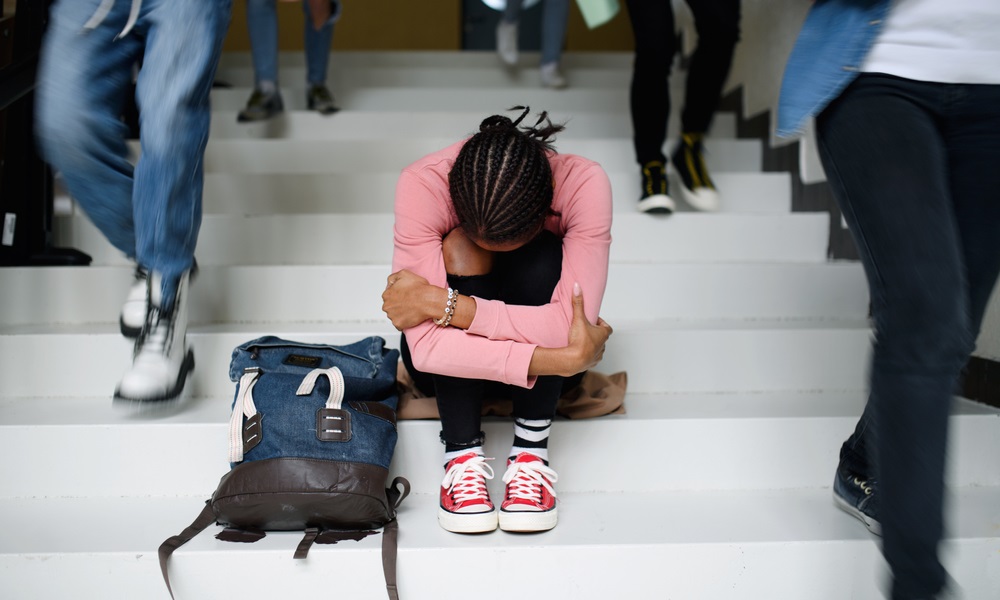These days, I often think about one particular girl, a bright eyed 18-year-old from Florida’s Palm Beach County who had a difficult childhood. Growing up, she witnessed and experienced substance, emotional, and physical abuse. To cope with this trauma, she started using drugs at 12. But the pain she felt only got worse, and by the time she was entering high school, she had attempted suicide and had been sent to a psychiatric hospital seven times.
I wish I could tell you that her story is unique – but it’s not. Four in ten of the girls and young women I work with experience suicidal ideation and the majority struggle with depression, anxiety and other mental health issues.

Courtesy of April Brownlee
April Brownlee
This mental health crisis has only gotten worse as a result of the COVID-19 pandemic. In 2019, 31% of girls at Pace Center for Girls, a network of academic and social service programs for girls and young women who experience trauma, reported suicidal ideation. Today that number is 43%.
This isn’t unique to Pace: across our country, more young people are struggling. But the burden of the crisis is not equally distributed across boys and girls. High school girls reported declining mental health and reduction of usual activities at more than double the rate of boys during the COVID-19 pandemic. And while emergency room visits for suspected suicide attempts increased in 2020, it rose by more than 50 percent for adolescent girls and only four percent for boys.
There are several reasons for this dramatic increase in mental health challenges. School shutdowns at the beginning of the pandemic left students feeling isolated at a time of a national crisis and many simply haven’t recovered. Young people often reach for social media in hopes of connecting with peers but leave feeling worse about themselves, an effect that is especially pronounced among teen girls.
The pandemic’s economic challenges have also had devastating impacts on families, especially those already struggling to make ends meet. That puts a heavy burden on girls, who even prior to COVID spent more time on household tasks than boys, to help out by taking on part-time work, cooking or taking care of younger siblings.
[Related content: Pandemic youth mental health toll unprecedented, data show]
As a result, many students are simply dropping out of school, leaving them even more isolated. During the 2020–22 school year, more than 1 million students were “unaccounted for” nationally.
These statistics are harrowing, but it is proven that prevention and intervention measures can change these outcomes.
The girls and young women I work with receive academic instruction and work closely with counselors trained in trauma-based therapy and suicide screening. Through this we see real change, with 9 out of 10 girls improving academically in school or employed one year after completing the program.
These results show the importance of prioritizing interventions addressing girls’ mental health challenges head-on. Too often, however, schools lack the resources needed to do this.
School counselors play a crucial role in screening for mental health challenges, but many schools simply do not have enough counselors on staff.
Lawmakers, both at the state and national level, need to prioritize providing schools with continuous and consistent funding to ensure they can do so. And schools need to ensure that counselors are trained in gender-responsive care and the unique ways in which the mental health crisis affects girls and young women.
We also need to raise awareness about services available to young people, such as the National Suicide and Crisis Lifeline. Since the hotline switched its number to 988 six months ago, it has seen a record number of calls, highlighting the high demand and importance of raising awareness about this service.
I am currently working with a girl-led task force to create campaigns to raise awareness of the hotline and other free services available in our community. Girls tell me that we need to meet them where they are, which includes social media platforms like Instagram, TikTok and BeReal. More efforts, informed by the experiences of our young people, should be rolled out in communities across the country.
With these dedicated investments, we can start building a better future for young people.
As for that bright-eyed 18-year-old who has survived so much trauma, she has found new ways of coping. Today she is actively involved in her community, was recently awarded a college scholarship and dreams of one day being a real estate agent.
“I am excited about my future. That’s something I never thought was possible,” she says.
***
April Brownlee is the senior director of program performance and innovation at Pace Center for Girls, supporting continued development of gender responsive programming initiatives to support at-promise girls. She is a licensed mental health counselor and the current co-chair of the Girls Coordinating Council of Palm Beach County, a community collaborative focusing on reforming and strengthening the system of care for girls.
































